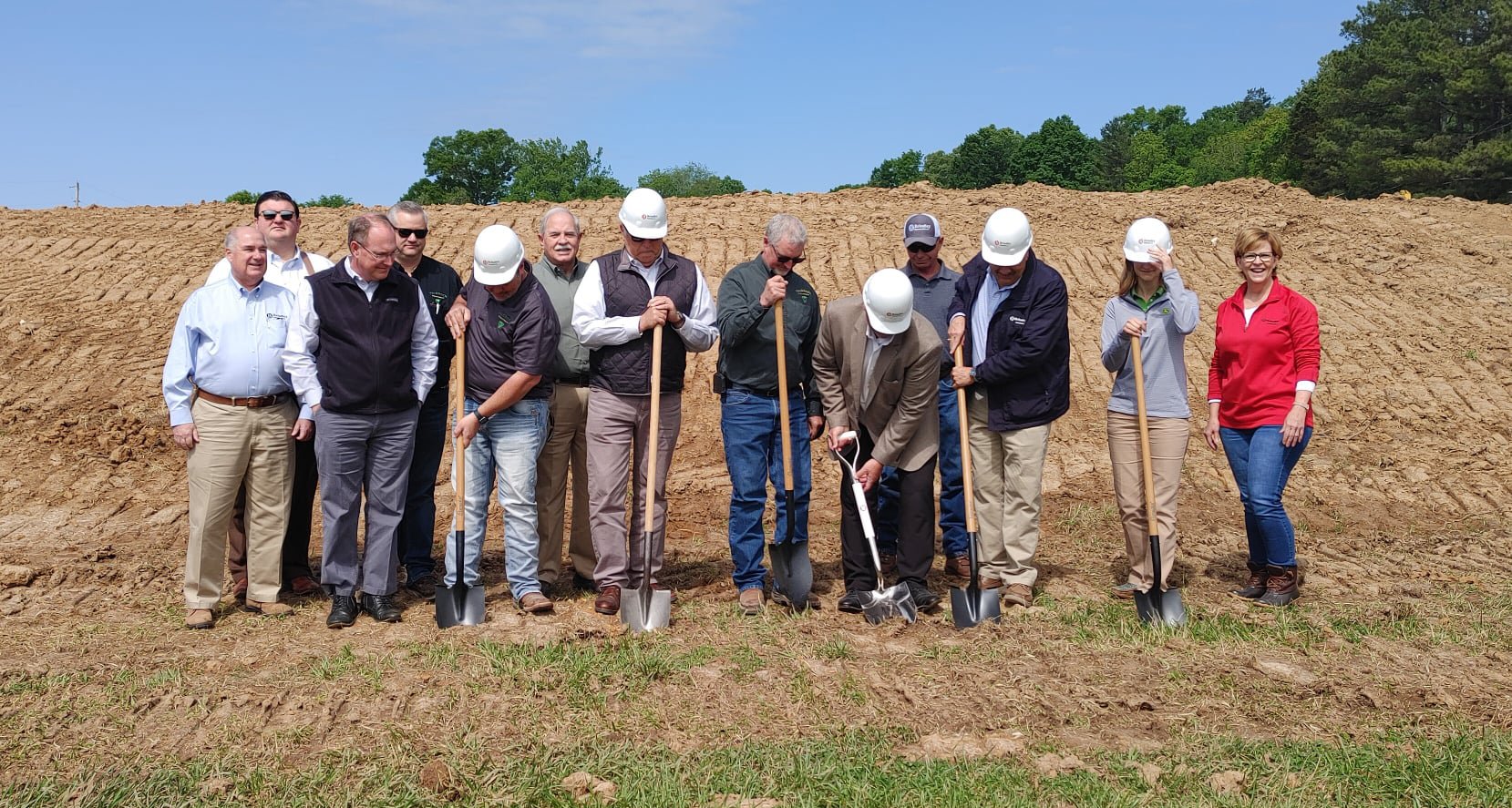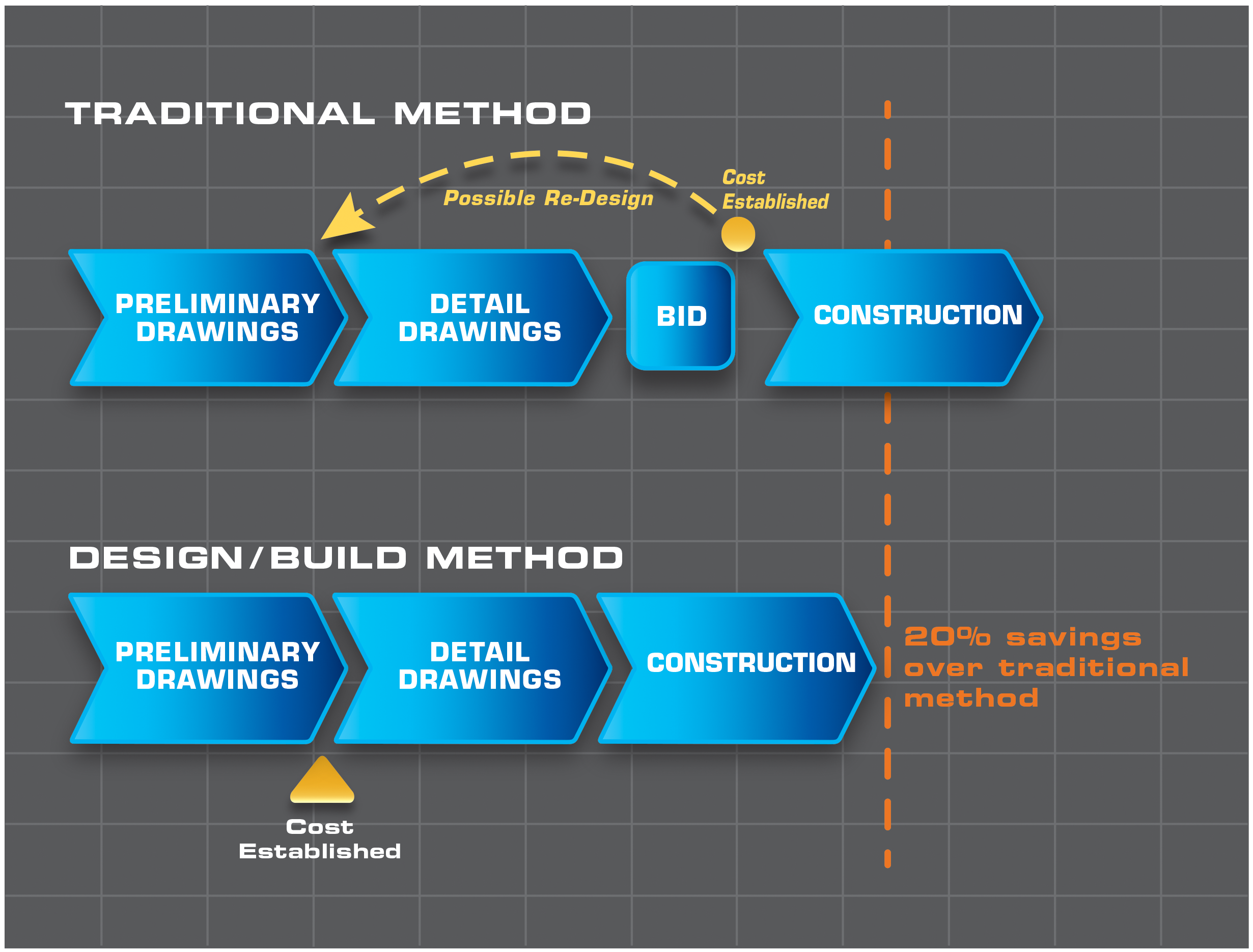Under the design-build delivery method, construction can begin earlier, with fewer issues because they were addressed earlier during the pre-construction phase where we develop the budget and the schedule.
The construction industry is no different than other industries when it comes to having its own set of terms and phrases that sometimes aren’t as obvious to people who don’t work within the industry. Naturally, when we talk about “construction delivery systems,” there can be a lot of confusion. Most people don’t know that there is more than one way to manage a construction project as well as the contractual relationship between the parties.
The Project Delivery Institute defines a construction project delivery system as “the structure of the relationships of the parties, the roles and responsibilities of the parties, and the general sequence of activities required to deliver the project.” In the most basic terms, it defines how the parties are related to each other contractually throughout the progress of the project. These “parties” are typically the owner, design team (architects, engineers), and general contractor. It may seem as though the relationships are easy to define, but many projects require these relationships to be adapted or changed to meet the project’s objectives.
For example, a fast-track project would make sense to use a delivery system that includes a single contract with the general contractor, as is the case with a design-build agreement. By contracting with just one entity for the project, the owner has simplified the payment process and allowed the designer and contractor to work together (and under the same contract) from the very start of the project. This not only shortens the overall project schedule, it allows for early input from the contractor who can head off potential design or material issues before they lead to cost overruns and/or schedule delays.
Construction project delivery methods
Before choosing a project delivery system, there are a few things you should consider, including the project budget, the scope of the project, the risks involved, the schedule, and the owner’s experience with construction projects. Below, we have outlined four of the most common construction delivery systems:
Design-Bid-Build (DBB)
Design-bid-build—also called hard bid or traditional project delivery—used to be the most popular project delivery method because it was thought to result in the lowest construction price. This delivery method is still used today, although its popularity is waning.
Here’s how it works: The designer/architect and general contractor work directly for the owner under separate contracts, and the designer is typically hired first. The designer works with the owner to develop the contract documents: conceptual drawings, elevations, site plans, specifications, and other exhibits. Once the design is complete, it is sent out to a list of general contractors to provide a bid on the project. It can take several weeks for contractors and subcontractors to price out a project.
Once the bids have been submitted, the design team and owner evaluate the proposals from the general contractors. Often, a handful of contractors are short-listed and asked to present their qualifications during an interview prior to the final selection. Once the contractor is selected and the contract is signed, construction can begin, and materials and equipment can be ordered.
Here are some of the disadvantages of this delivery method:
- The design phase can require the owner to spend a lot of cash before getting a firm price on the actual construction project.
- Depending on the quality of the design, the owner may be vulnerable to change orders, delays, and additional costs because the contractor wasn’t part of the team early-on and didn’t have the opportunity to provide feedback during the design process.
- The actual construction process doesn’t begin until the design is finalized, adding more time to the overall schedule of the project.
Design-Build (DB)
According to the Design-Build Institute of America (DBIA), the design-build delivery system is the fastest growing and most popular method used to deliver construction projects in America. Design-build is a simplified process for owners, because they are only contracted with one firm. In this delivery system, both the design and construction phases are covered under one contract with one company.
The entire project is handled by either the architect or the contractor from start to finish. This is in stark contrast to the DBB delivery system. When the design team and construction team are involved from the start, it creates a collaborative environment that results in fewer disputes, better adherence to budget and a more efficient process overall. According to DBIA’s most recent findings, a DB project can be constructed 36% faster than a project using the DBB process.
Design-build projects allow contractors and subcontractors to have a say in the design, which can be beneficial when they have extensive experience. The process from start of design to completion of construction is usually shorter too, because construction can begin (sitework, foundations, etc.) before the final designs are completed.
Advantages of the design-build process include:
• Early cost, design and materials input from the contractor
• A guaranteed maximum price
• Time is saved by compressing schedule
• Greatly reduces or eliminates change orders
• Design and contractor fees are kept to a minimum
• Legal fees are kept to a minimum
• Owner can occupy the facility earlier
By simplifying the construction process and involving the contractor in the earliest stages of planning, the design-build method offers many benefits over other construction delivery systems.
This is the delivery system Brindley Construction uses most often. It ensures that we are involved early-on in the process so we can offer our expertise during the design phase. We can begin construction earlier, with fewer issues because they were addressed earlier during the pre-construction phase where we develop the budget, schedule and perform value engineering services to give the owner what they envision while adhering to the budget. Owners can occupy their new facilities sooner and have a higher level of satisfaction–resulting in a win-win for everyone.
Groundbreaking at TriGreen Equipment at their new Columbia, Tennessee location at 271 Theta Pike.
Construction Manager (CM)
The Construction Management Association of America (CMAA) defines Construction Management as a delivery system that provides a project’s owner with effective management of the project's schedule, cost, quality, safety, scope, and function. The Construction Manager’s (CMs) responsibility is solely to the owner and to the management of a successful project.
At its core, a project is made up of three parties in addition to the CM:
• The owner, who commissions the project and either funds the project directly or finances it through a variety of methods, such as bank financing.
• The architect/engineer, who designs the project.
• The general contractor, who oversees day-to-day operations and manages the subcontractors.
The CM represents the owner’s interest and provides oversight over the entire project directly for the owner. His/her mandate is to work with all parties to deliver the project on time, at or under budget, and to the owner’s expected standard of quality, scope, and function. CM is typically used on larger, more complex projects, or where the owner is less involved in the project.
Construction Manager at Risk (CMAR or CM@R)
With the Construction Manager at Risk method, a CM—often a general contractor—acts as the owner’s representative during both the design and construction phases.
Similar to the DBB method, the CMAR method separates the design and building processes. The construction manager is involved from the beginning with the design process, mainly as a cost controller and advocate for the owner, and also oversees construction just as a general contractor would. The difference is that the CMAR accepts the risk for meeting the project deadline and owner’s budget, which are usually expressed as a guaranteed maximum price (also called stipulated sum or fixed price).
If construction costs come in higher than expected, the CMAR is expected to absorb those costs, which reduces their overhead and profit. Of course, on the other hand, if costs are lower than expected, the CMAR will increase their profit, unless the contract calls for sharing the savings. Either way, the CMAR is invested in reducing costs and keeping the project on schedule, which helps the owner meet their project goals.
One advantage of this method is that subcontractors have a direct contractual relationship to the owner, and don’t have to wait for payments to filter through the tiers. This can lead to speedier payments and less paperwork for subs and suppliers.
We’ve outlined only four of the construction project delivery systems that are used today throughout the world. There are others—such as Construction Manager Multi-Prime (CMMP), Integrated Project Delivery (IPD) and Public-Private Projects (P3)—and some that are hybrid approaches.
Regardless, it is helpful to know there is more than one method of managing the construction of a commercial or industrial project. Deciding which project delivery system is best for your project relies upon the type of project, how much control over the project you want, your project timeline, and your budget. Every project is different, so you’ll need to choose the right method that helps you reach your goals. We can help you explore which method is right for your next project.






Leave a Comment